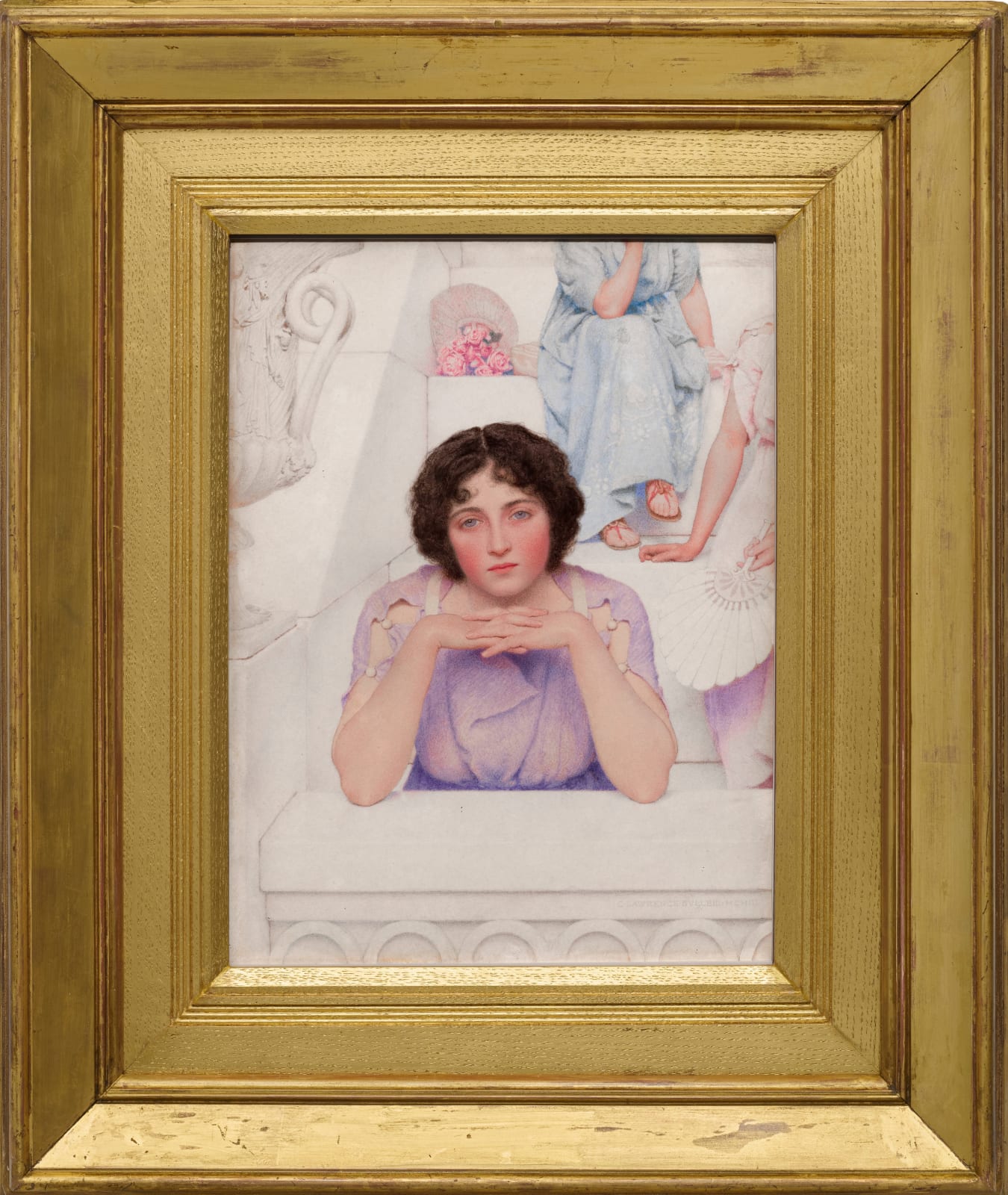George Lawrence Bulleid (1858-1933)
George Lawrence Bulleid was born in Glastonbury, Somerset, where his father worked as a solicitor. First following in his father’s footsteps, Bulleid studied art in the evenings while pursuing a legal career. He started at the West London School of Art and continued at the Heatherley School of Fine Art in Chelsea. In 1889, Bulleid became an Associate of the Royal Watercolour Society (RWS). That same year, he returned to his native West Country, settling in Bradford on Avon near Bath. Attracted to the Graeco-Roman style, established by his predecessors Frederick Leighton (1830-1896) and Lawrence Alma-Tadema (1836-1912), Bulleid’s later work reflects the influence of the Pre-Raphaelites. Their compositional style and use of strong, direct colors resonated with Bulleid’s favored Neo-classical themes. Bulleid primarily worked in watercolor, exhibiting regularly at the Royal Academy between 1888 and 1913. However, he mostly showed with the RWS; by the end of his career, he had exhibited a remarkable total of 113 works there.
Provenance
Private collection, United KingdomWoolley & Wallis, Salisbury Wiltshire, 8 March 2023, lot 123



